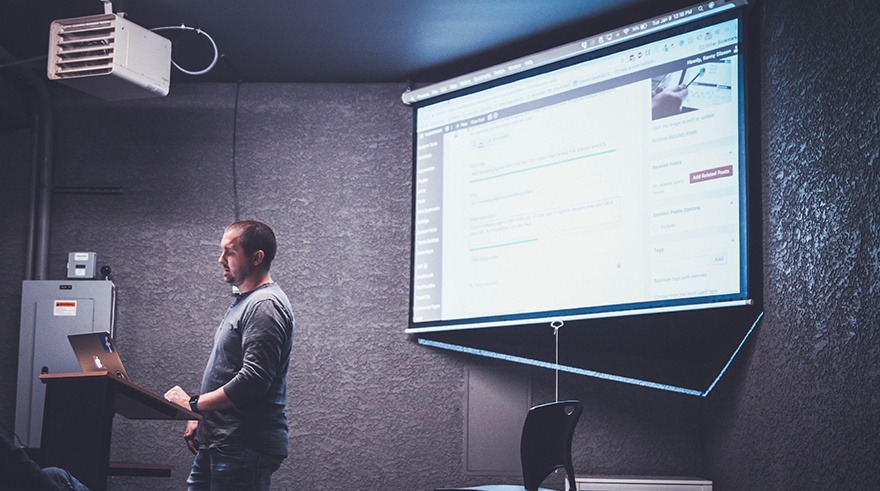It is always hard to grab audiences’ attention and certain types of audiences are much more difficult to deal with. If you are a sixth grade teacher, you probably are dealing on a daily basis with the toughest type of audience there is and mastering public speaking is a matter of survival!
Some people are truly blessed with the ability to speak well in public, easily reaching audiences. But for those of us that are not, know that with some visual aids, great genuine visual and good preparation you will see that it is not that hard to win over your audiences.
Customize Message, Media and Vibes
Brands invest in different advertising types, because they want to pass their message to the greatest number of people/ audiences possible. Messages and media have to adjust to be the most effective they to catch the attention of different people. The same needs to happen when you are preparing a public speech.
To ensure that you give an effective presentation grabbing an audience’s attention, you just need to adjust your own image, approach and visual communication aids to the audience you have in front of you.
Using a Nirvana T-shirt and teared jeans when facing scholars or investors it is probably not a good idea. Using a flipchart easel or tiny whiteboard for a huge auditorium will be a terrible choice - Legible handwriting that can be seen at a distance is of prime importance, so using these kinds of visual aids should be limited to small audiences. Trying to go too big in a truly important presentation in an improvised meeting space can be tricky if you do not have the correct portable solution.

Be Smart, Think Visually
“The soul never thinks without a picture. “– Aristotle
To better help your audience retain your message your presentation needs to be designed to enhance public attention and comprehension.
We have stated many times before that people retain much faster information that they apprehend visually.
So besides preparing your best look, also clearly structure your presentation, thinking visually, and in which moments of your speech the use of visual effects and viscom will help you and your audience better understand the message.
While some speakers write and draw to highlight important points, this takes an enormous amount of skill and practice. Writing during your presentation could take away from your speaking time, so make sure to factor this when preparing. Additionally, if you are writing pointing, showing, you need to be careful not to turn your back on your audience.
Planning and Practice: the Secret for Success
Nothing truly good can come out of something that is not previously planned and practiced or tested.
Research, listen and read to other presentations and discussions on the matter you are speaking about. Find good interesting stories on the topic. It is important for you know exactly what you want your audience to do immediately after hearing your speech. You should present messages that are able to drive actions. Then clearly identify your topics, determine your key ideas to show and organize your content in an outline. Structuring your material in three sections– grabber, middle, and close - is highly recommended. Nevertheless know your material. Include 3-8 second pauses at key moments – just before key statements or just after a story – this really brings the audience into the speech.
Prepare well ahead of time. Experience builds confidence, which is the key to effective speaking. A great performer practices their act hundreds of times before performing it in front of an audience. A great speaker practices as many times as possible the words before they find themselves on the spot. Rehearse out loud with all equipment, and visual supports or props you plan on using. Work to control filler words, pauses to breathe, silences. Check your timings and allow time for unexpected setbacks.
Keep Calm & Wow Away
When the D day arrives, go earlier to the venue where the speech is happening. Try to speak to some people in the audience as they start entering the venue, you will need allies and it becomes easier to speak to people you have met than to strangers. Try to arrive also in time to check out the speaking area and get practice using the microphone and any visual aids.
Engage your public, by starting with a “grabber”. A great entrance, with a great entrance music, choreography, a movie that tells a personal story, or even a quote from an area expert or a strong impactful statistic, will certainly hook your audience attention and open their mind to your message.
Smile while talking. Show people that the message and their attention, thoughts and future actions on it matter to you. Make eye contact, express your emotions, use humour, make a powerful statements, and explain your reasons, move and gesture, use metaphors… be a storyteller! And if you do or get something wrong, don’t apologize. The audience probably never noticed it and it is better to smile, and keep the show going.

There are few skills that will bring more opportunity into your life then mastering public speaking, and following these useful tips, we all can all indeed make – and feel- the difference when it comes to overcome this type of challenges.
Communication distinctive and efficiently has always been important and the use of visual aids not only helps to improve a clearer presentation of your ideas but also to turn your communication more dynamic and lively.



.png)